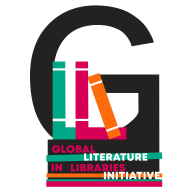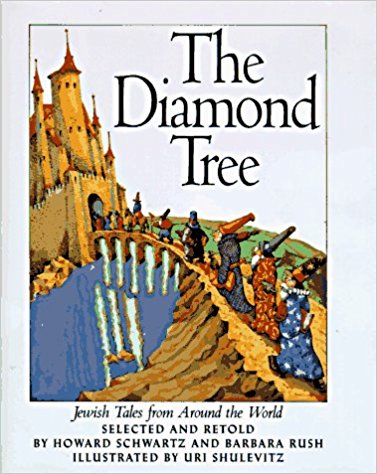English-language retellings of Jewish folktales come from many different source languages, Yiddish, Hebrew, and Ladino (the language of the Sephardic Jews) chief among them. This post will present a round-up of some of my favorite storytelling collections, whether translated or otherwise reworked from the oral tradition.
Since I work in a Sephardic congregation library, I was thrilled to discover Rita Roth’s The Power of Song and Other Sephardic Tales, illustrated by Alexa Ginsburg (Jewish Publication Society, 2007). Though you can find some of the stories elsewhere, her versions are very good for telling. The book comes with an excellent introduction and source notes. A typical story combines several related snippets of story from the oral tradition to make a satisfying whole. This collection won the Jewish Book Council’s National Jewish Book Award in the category of Jewish Family Literature.
Howard Schwartz and Barbara Rush’s The Diamond Tree: Jewish Tales from Around the World, illustrated by Uri Shulevitz (HarperCollins, 1991) is another very tellable collection based on impeccable scholarship. Sources include “the Talmud, the Midrash, the earliest Jewish folk anthology (the Alphabet of Ben Sira), Hasidic lore, Eastern European folklore, and Middle Eastern folklore” and the Israel Folktale Archives. The Diamond Tree won the Association of Jewish Libraries’ Sydney Taylor Award, which recognizes outstanding children’s books that authentically portray Jewish experience.
Another of my go-to collections is Rachel the Clever and other Jewish Folktales, selected and retold by Josepha Sherman (August House, 1993). Story sources include Central Asia, Russia, Morocco, Middle Europe, Spain, Yemen, Tunisia, Romania, Czechoslovakia, Afghanistan, and Iran, with stories from Poland, Eastern Europe, and the Talmud predominating. The table of contents is helpfully organized by type of story — Magical Tales, Clever Folks, Tales of Ghosts and Other Strange Things, Doing the Right Thing, the Wise Men of Chelm – and concludes with A Sampling of Riddles. Here’s one of my favorites:
Q: It’s not a shirt, yet it’s sewed.
It’s not a tree, yet it’s full of leaves.
It’s not alive, yet it talks wisely.
What is it?
A: A book.
The Wise Men of Chelm deserve special mention. I love these silly stories about the denizens of the legendary Jewish village of fools who think, of course, that they are very wise. How did so many foolish people end up in one place? Well, they say that an angel, unnerved by a clap of thunder, mistakenly dropped a whole bag of foolish souls there. And what happened after that? All sorts of stories! You will find Chelm or related stories in most collections of Jewish stories, including the ones mentioned above.
But there are Chelm-only collections too. Steve Sanfield’s The Feather Merchants and Other Tales of the Fools of Chelm, illustrated by Russian artist Mikhail Magaril (Orchard Books, 1991), is great fun. Isaac Bashevis Singer wrote many Chelm stories. His two Newbery Honor books, Zlateh the Goat & Other Stories, illustrated by Maurice Sendak (Farrar Straus & Giroux, 1966), and When Schlemiel Went to Warsaw & Other Stories, illustrated by Margot Zemach (1968) are more literary in style. Both of these translations from the Yiddish are by the author and Elizabeth Shub. Also very well received are Solomon Simon’s The Wise Men of Helm and Their Merry Tales, illustrated by Lillian Fischel (Behrman House, 1942) and More Wise Men of Helm (1965), both translated from the Yiddish by Ben Bengal and David Simon. Francine Prose’s The Angel’s Mistake: Stories of Chelm, illustrated by Mark Podwal (Greenwillow 1997) is a simpler picture book retelling—and the source I used to explain (above) how all those foolish souls ended up in Chelm.
By Annette Y. Goldsmith


This is great. Can I share?
LikeLike
Definitely! Please do.
LikeLike
Thanks! I’ve been pretty amiss with my Jewish books but you are helping me get my act together!
LikeLike